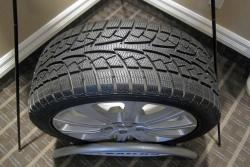 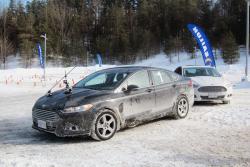 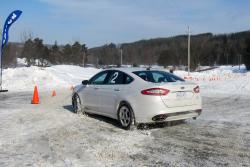 Sailun Ice Blazer WSL2. Click image to enlarge |
Review and photos by Paul Williams
Mono, Ontario – Although the Sailun Tire Company sells a full range of tires for passenger cars, SUVs and commercial vehicles in Canada and around the world, it’s true that Sailun is not a household name like ‘Tier 1’ national brands Michelin, Bridgestone or Goodyear. Nor, admits Sailun Canada, are they what is regarded as a ‘Tier 2’ company, comprised of brands like BF Goodrich, Hankook, Toyo or Yokohama.
Sailun resides in what is called the ‘Value’ category – Tier 3 – along with brands like Hercules and GT Radial. But Sailun wants you to know that it punches above its weight.
By that it means Sailun tires may well cost much less than Tier 1 and Tier 2 level tires, but they deliver the quality and performance of at least brands from Tier 2.
“Actually, we’d like to say we match the National brands,” says Sailun Canada Vice President Marketing Brian Mielko, “But nobody would believe us. So let’s just start with Tier 2.”
Fair enough.
Before we get to Sailun’s comparison at the Hockley Valley Resort northwest of Toronto between its winter tire, the Ice Blazer WSL2, and the Hankook i*Pike WS 419, a word about Sailun. Who owns it? Where is it based? What do they know about making tires?
Sailun is an independent company established in 2001 and based in China. Its factory, situated south of Beijing, is in close proximity to other tire manufacturing plants operated by the likes of Pirelli, Bridgestone and Continental. Sailun Canada executives are well aware that “Made in China” is not yet a recommendation for quality and that this is a reason for concern by some consumers, especially when it comes to a safety-related purchase like new tires for the family vehicle.
But according to Mr. Mielko, “China can build what you want. If you want a high quality, precision device like an iPad, China can build it; if you want a spacecraft that can orbit the planet, China can build that, too. And if you want something of lower quality, well, it depends on what you want.”
What he’d like consumers to understand about Sailun tires is that, “Quality is not related to the country of origin, but is directly related to the factory of origin.”
Mr. Mielko makes the point, therefore, that Chinese factories are more than capable of building excellent tires, and indeed the Tier 1 brands have large manufacturing facilities in China (although these are not Chinese companies, it should be said). Sailun’s heading for an annual global output of 30 million tires, which are sold in 120 countries and from Sailun’s point of view, the quality of its tires should be judged on their merit.
Which brings us back to the tire comparison between the Tier 3 Sailun Ice Blazer and the Tier 2 Hankook i*Pike.
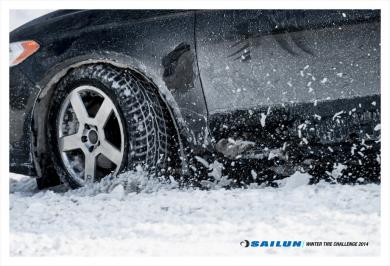 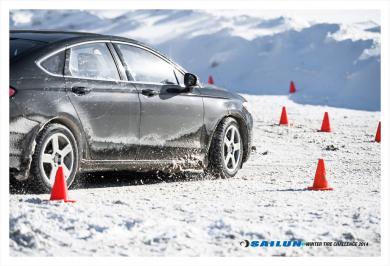 Sailun Ice Blazer WSL2. Click image to enlarge |
The Hockley Valley Resort is nestled among the picturesque Caledon Hills outside of Toronto, and mid-winter will find it and the surrounding countryside wearing a thick layer of snow and ice. The tire test comprised a session on country roads and another on two closed circuits at the resort. The wrinkle was that this was a blind test, with the sidewalls of the tires shaved so that the manufacturer could not be identified. The vehicles were Ford Fusion all-wheel-drive sedans.
We drove the cars back to back in varying and challenging conditions throughout the day, each segment followed by a survey focusing on acceleration, braking and handling impressions. Likely you could have identified the tires by their tread pattern; we were asked not to try, and I complied.
On the road, going uphill, downhill and around corners, I was hard pressed to tell the difference between the tires. On hard packed snow, the vehicles performed equivalently and I experienced no discernible evidence of superiority or inferiority between them. Both provided a secure, stable, controlled driving experience. Granted, the Fusion’s all-wheel-drive system would have helped when starting from standstill, but the traction control system didn’t activate, suggesting an equivalent measure of grip.









